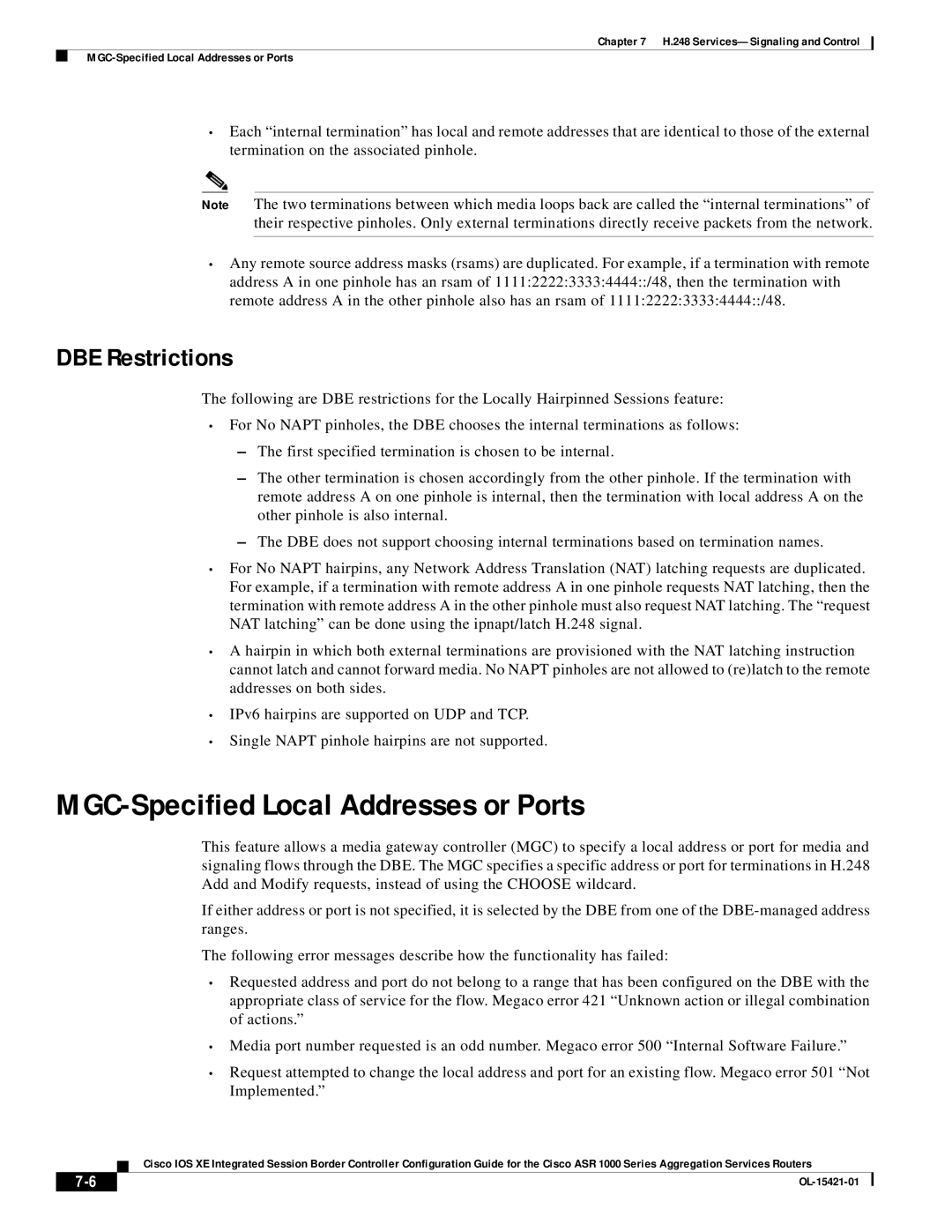
Chapter 7 H.248
•Each “internal termination” has local and remote addresses that are identical to those of the external termination on the associated pinhole.
Note The two terminations between which media loops back are called the “internal terminations” of their respective pinholes. Only external terminations directly receive packets from the network.
•Any remote source address masks (rsams) are duplicated. For example, if a termination with remote address A in one pinhole has an rsam of 1111:2222:3333:4444::/48, then the termination with remote address A in the other pinhole also has an rsam of 1111:2222:3333:4444::/48.
DBE Restrictions
The following are DBE restrictions for the Locally Hairpinned Sessions feature:
•For No NAPT pinholes, the DBE chooses the internal terminations as follows:
–The first specified termination is chosen to be internal.
–The other termination is chosen accordingly from the other pinhole. If the termination with remote address A on one pinhole is internal, then the termination with local address A on the other pinhole is also internal.
–The DBE does not support choosing internal terminations based on termination names.
•For No NAPT hairpins, any Network Address Translation (NAT) latching requests are duplicated. For example, if a termination with remote address A in one pinhole requests NAT latching, then the termination with remote address A in the other pinhole must also request NAT latching. The “request NAT latching” can be done using the ipnapt/latch H.248 signal.
•A hairpin in which both external terminations are provisioned with the NAT latching instruction cannot latch and cannot forward media. No NAPT pinholes are not allowed to (re)latch to the remote addresses on both sides.
•IPv6 hairpins are supported on UDP and TCP.
•Single NAPT pinhole hairpins are not supported.
MGC-Specified Local Addresses or Ports
This feature allows a media gateway controller (MGC) to specify a local address or port for media and signaling flows through the DBE. The MGC specifies a specific address or port for terminations in H.248 Add and Modify requests, instead of using the CHOOSE wildcard.
If either address or port is not specified, it is selected by the DBE from one of the
The following error messages describe how the functionality has failed:
•Requested address and port do not belong to a range that has been configured on the DBE with the appropriate class of service for the flow. Megaco error 421 “Unknown action or illegal combination of actions.”
•Media port number requested is an odd number. Megaco error 500 “Internal Software Failure.”
•Request attempted to change the local address and port for an existing flow. Megaco error 501 “Not Implemented.”
Cisco IOS XE Integrated Session Border Controller Configuration Guide for the Cisco ASR 1000 Series Aggregation Services Routers
| ||
|
